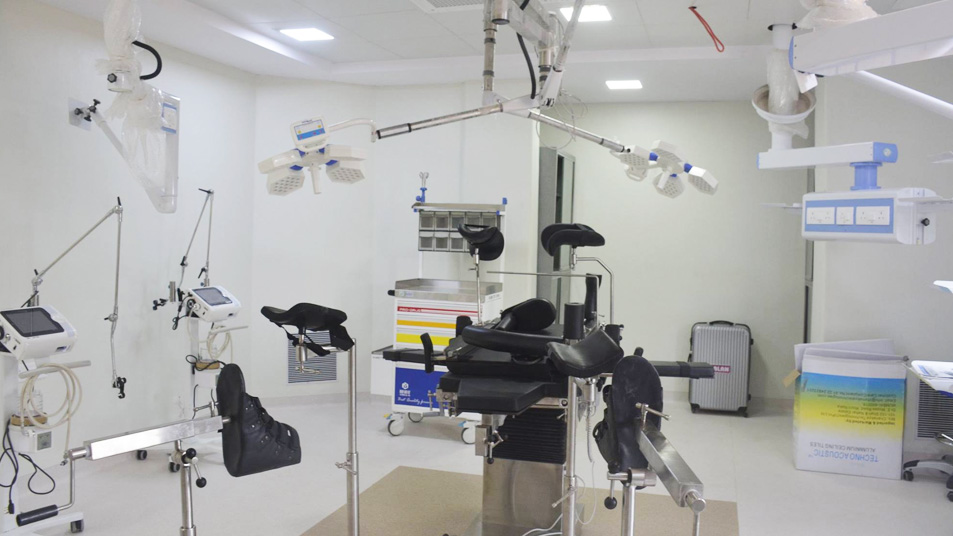
Dialysis is a medical treatment that performs the functions of the kidneys for individuals whose kidneys are not working properly.
The main purpose is to remove waste products and excess fluids from the blood when the kidneys are unable to do so on their own.
There are two main types of Dialysis :
Haemodialysis : In this method, blood is removed from the body, filtered through a machine (dialyzer), and then returned to the body. It’s a 3- to 5-hour process that usually takes place in a dialysis center, but it can also be done at home with the right equipment and training.
Peritoneal Dialysis : This method uses the lining of the abdomen (the peritoneum) as a natural filter. A special fluid is introduced into the abdominal cavity through a catheter, and waste products and excess fluids are absorbed into the fluid and then drained out.
What happens during Hemodialysis?
During Hemodialysis, the dialysis machine :
Removes blood from a needle in your arm.
Flows blood through the dialyzer filter, transferring waste materials into a dialysis solution. Salt, water, and more ingredients are present in this cleaning solution.
Returns blood that has been filtered to your body via an alternative needle in your arm.
Keeps track of your blood pressure to modify the rate at which blood enters and leaves your body.
What happens after Hemodialysis?
Low blood pressure can happen to certain persons during or just after hemodialysis. You may feel nauseous, dizzy or faint.
Other side effects of hemodialysis include :
Chest pain or back pain, Headaches, Itchy skin, Muscle cramps, Restless legs syndrome.
Potential risks of Hemodialysis:
Problems with the AV fistula or graft arise for some individuals. An infection, inadequate blood flow, a blockage caused by scar tissue, or a blood clot might occur.
In rare instances, a tube or the dialysis needle may emerge from the machine while you are receiving treatment. A blood leak detecting device notifies the medical professionals or you about this issue. The machine will turn off for a while until the issue is resolved. This system protects you from blood loss.
What is Peritoneal Dialysis?
With the use of a dialysis solution, microscopic blood vessels located inside the peritoneum, the lining that lines the abdomen, filter blood during peritoneal dialysis. This mixture of water, salt, and other ingredients is a kind of cleansing liquid. Peritoneal dialysis takes place at home.
This therapy can be administered in two ways:
Automated peritoneal dialysis uses a machine called a cycler.
Manual labor is required for continuous ambulatory peritoneal dialysis, or CAPD.
What happens during peritoneal dialysis?
During peritoneal dialysis, you:
Attach one branch of a Y-shaped tube to the catheter. This tube is attached to a dialysis solution - filled bag. The peritoneal cavity receives the solution as it passes through the catheter and tube.
When the bag is empty, approximately ten minutes later, disconnect the tube and catheter.
Cap off the catheter.
While the dialysis solution in the peritoneal cavity collects waste and excess fluid from the body, carry on with your regular activities. This might take an hour or ninety minutes.
Using the other branch of the Y-shaped tube, remove the catheter's cap and dump the fluid into a fresh, clean bag.
Take up to four repeats of these instructions each day. Your stomach is filled with the solution while you sleep.
Some people prefer to do peritoneal dialysis at night. With automated peritoneal dialysis, a machine called a cycler pumps the fluid in and out of the body while you sleep.
What happens after peritoneal dialysis?
Your stomach's fluids might make you feel full or bloated. It might feel uncomfortable, but the treatment isn’t painful. When full of fluid, your stomach may protrude more than usual.
Potential risks of Peritoneal Dialysis:
Some people develop skin infections around the catheter. Additionally, you run the danger of developing peritonitis, an illness brought on by germs entering your abdomen through your catheter. Fever, nausea, vomiting, and stomach discomfort are possible side effects.
Over time, the abdominal muscles may weaken as a result of using the abdominal catheter and pumping fluid into your abdomen. A hernia could develop in you. When an organ, such as the small intestine, protrudes through the abdominal muscles, it can cause this illness. There can be a bulge in the area between your upper thigh and abdomen, or close to your belly button. A hernia can be surgically repaired
by your doctor.
The sugar dextrose is absorbed by your body from the dialysis fluid during peritoneal dialysis. With time, weight gain may result from this excess sugar.
